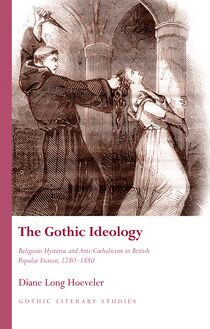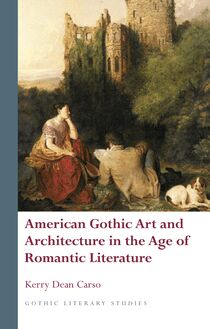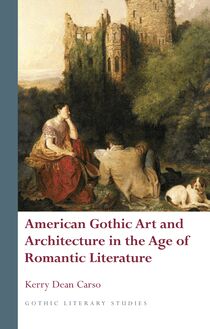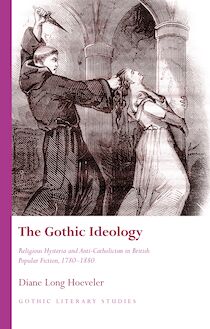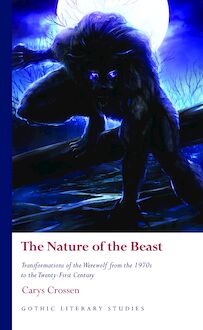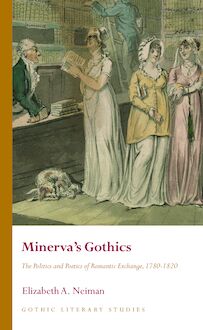-
 Univers
Univers
-
 Ebooks
Ebooks
-
 Livres audio
Livres audio
-
 Presse
Presse
-
 Podcasts
Podcasts
-
 BD
BD
-
 Documents
Documents
-
- Cours
- Révisions
- Ressources pédagogiques
- Sciences de l’éducation
- Manuels scolaires
- Langues
- Travaux de classe
- Annales de BEP
- Etudes supérieures
- Maternelle et primaire
- Fiches de lecture
- Orientation scolaire
- Méthodologie
- Corrigés de devoir
- Annales d’examens et concours
- Annales du bac
- Annales du brevet
- Rapports de stage
La lecture à portée de main
Découvre YouScribe en t'inscrivant gratuitement
Je m'inscrisDécouvre YouScribe en t'inscrivant gratuitement
Je m'inscrisEn savoir plus
En savoir plus

Description
Crossen, C. "‘I'm going to put death in all their food and watch them die’: Poison, Time and Gender in Gothic Texts" in Temporal Discombobulations: Time and the Experience of the Gothic, The University of Surrey, 23rd August 2016 [e-book]
Crossen, C. ‘Educating Edward and Everyone: The Issue of Endless Education in Meyer’s Twilight Saga,’ in Horror Studies, 6:1, Spring, 2015
Crossen, C. "The Complex and Antagonistic Forces That Constitute One Soul": Conflict between Societal Expectations and Individual Desires in Clemence Housman’s ‘The Werewolf’ and Rosamund Marriott Watson’s ‘A Ballad of the Werewolf,’ in Priest, H. (ed.) She-Wolf: A Cultural History of Female Werewolves, Manchester University Press, April 2015
Crossen, C. "Something like You, Something like a Beast": Gothic Convention and Fairy Tale Elements in David Almond’s Skellig, in Pell, T. and Abbruscato, J. (eds.) The Gothic Fairy Tale in Young Adult Literature: Essays on Stories from Grimm to Gaiman, McFarland, November 2014
Crossen, C. ‘"Would you please stop trying to take your clothes off?": Abstinence and Impotence of Male Vampires in Contemporary Fiction and Television,’ in Davis, L. and Santos, C. (eds.) The Monster Imagined: Humanity’s Re-Creation of Monsters and Monstrosity, Inter-Disciplinary Press, pp. 111-123, 2010
The werewolf in popular fiction has begun to change rapidly. Literary critics have observed this development and its impact on the werewolf in fiction, with theorists arguing that the modern werewolf offers new possibilities about how we view identity and the self. Although this monograph is preoccupied with the same concerns, it represents a departure from other critical works by analysing the werewolf’s subjectivity/identity as a work-in-progress, where the fixed and final form is yet to be arrived at – and may never be fully accomplished. Using the critical theories of Deleuze and Guattari and their concepts of ‘multiplicities’ and ‘becoming’, this work argues that the werewolf is in a state of constant evolution as it develops new modes of being in popular fiction. Following on from this examination of lycanthropic subjectivity, the book goes on to examine the significant developments that have resulted from the advent of the werewolf as subject, few of which have received any sustained critical attention to date.
Acknowledgements
Introduction
‘Some Wolves Are Hairy on the Inside’: The Werewolf’s Journey Towards Subjectivity
Do You Enjoy the Company of Wolves? The Lycanthrope, the Werewolf Pack and Human Society
‘Before the Law Therefore, There Cannot Be Monsters . . .’
The Werewolf in the Concrete Jungle
Growing Pains: Lycanthropy in Contemporary Young Adult Fiction
Conclusion
Notes
Bibliography
Filmography
Index
Sujets
Informations
| Publié par | University of Wales Press |
| Date de parution | 01 octobre 2019 |
| Nombre de lectures | 0 |
| EAN13 | 9781786834577 |
| Langue | English |
| Poids de l'ouvrage | 9 Mo |
Informations légales : prix de location à la page 0,4400€. Cette information est donnée uniquement à titre indicatif conformément à la législation en vigueur.
Extrait
THE NATURE OF THE BEAST
00 Prelims NatureBeast 2019_9_5.indd 1 05-Sep-19 4:25:50 PMSERIES PREFACE
Gothic Literary Studies is dedicated to publishing groundbreaking
scholarship on Gothic in literature and flm. The Gothic, which has
been subjected to a variety of critical and theoretical approaches,
is a form which plays an important role in our understanding of
literary, intellectual and cultural histories. The series seeks to promote
challenging and innovative approaches to Gothic which question
any aspect of the Gothic tradition or perceived critical orthodoxy.
Volumes in the series explore how issues such as gender, religion,
nation and sexuality have shaped our view of the Gothic tradition.
Both academically rigorous and informed by the latest developments
in critical theory, the series provides an important focus for scholarly
developments in Gothic studies, literary studies, cultural studies and
critical theory. The series will be of interest to students of all levels
and to scholars and teachers of the Gothic and literary and cultural
histories.
SERIES EDITORS
Andrew Smith, University of Sheffeld
Benjamin F. Fisher, University of Mississippi
EDITORIAL BOARD
Kent Ljungquist, Worcester Polytechnic Institute Massachusetts
Richard Fusco, St Joseph’s University, Philadelphia
David Punter, University of Bristol
Chris Baldick, University of London
Angela Wright, University of Sheffeld
Jerrold E. Hogle, University of Arizona
For all titles in the Gothic Literary Studies series
visit www.uwp.co.uk
00 Prelims NatureBeast 2019_9_5.indd 2 05-Sep-19 4:25:50 PMThe Nature of the Beast
Transformations of the Werewolf from
the 1970s to the Twenty-First Century
by
Carys Crossen
UNIVERSITY OF WALES PRESS
2019
00 Prelims NatureBeast 2019_9_5.indd 3 05-Sep-19 4:25:50 PM© Carys Crossen, 2019
All rights reserved. No part of this book may be reproduced in any material
form (including photocopying or storing it in any medium by electronic
means and whether or not transiently or incidentally to some other use of
this publication) without the written permission of the copyright owner.
Applications for the copyright owner’s written permission to reproduce
any part of this publication should be addressed to the University of Wales
Press, University Registry, King Edward VII Avenue, Cardiff CF10 3NS.
www.uwp.co.uk
British Library Cataloguing-in-Publication Data
A catalogue record for this book is available from the British Library.
ISBN 978-1-78683-456-0
e-ISBN 978-1-78683-457-7
The right of Carys Crossen to be identifed as author of this work has been
asserted by her in accordance with sections 77 and 79 of the Copyright,
Designs and Patents Act 1988.
Nine lines of free verse excerpted from Sharp Teeth by Toby Barlow.
Copyright © 2007 by Thomas Barlow. Reprinted by permission of
HarperCollins Publishers.
Typeset in Wales by Eira Fenn Gaunt, Pentyrch, Cardiff
Printed by CPI Antony Rowe, Melksham
00 Prelims NatureBeast 2019_9_5.indd 4 05-Sep-19 4:25:50 PMTo my husband Nick
And to my Mum, and also my Dad.
You know I always like giving books as presents.
00 Prelims NatureBeast 2019_9_5.indd 5 05-Sep-19 4:25:50 PMContents
Acknowledgements ix
Introduction1
1 ‘Some Wolves Are Hairy on the Inside’: The Werewolf’s
Journey Towards Subjectivity 17
2 Do You Enjoy the Company of Wolves? The
Lycanthrope, the Werewolf Pack and Human Society 53
3 ‘Before the Law Therefore, There Cannot Be
Monsters . . .’ 95
4 The Werewolf in the Concrete Jungle 133
5 Growing Pains: Lycanthropy in Contemporary
Young Adult Fiction 175
Conclusion 223
Notes 227
Bibliography 257
Filmography272
Index273
00 Prelims NatureBeast 2019_9_5.indd 7 05-Sep-19 4:25:50 PMACknowledgements
Thanks are due to my family: my husband, my parents, my sister
Bethan and her partner James and my in-laws, the Anderton family,
for their support and endless patience.
Thanks of an academic nature are due to Professor Emerita
Jacqueline Pearson, for guiding me with patience and rigour through
the PhD that would provide the foundation for this work. Lively
discussion and encouragement were provided by Dr Catherine
Spooner, Dr Daisy Black, Dr Hannah Priest, and everyone who
attended the splendid ‘Company of Wolves’ conference at the
University of Hertfordshire in September 2015. My editor at
University of Wales Press, Sarah Lewis, was immensely patient and
helpful when dealing with a frst-time author. Thanks also to
everyone who attended the brilliant She-Wolf Conference at The
University of Manchester in September 2010, in particular Chantal
Bourgault Du Coudray, whose work I draw on heavily here, and
Jazmina Cininas. Apologies if I have forgotten anyone, which is
likely, and thanks all the same.
The publisher gratefully acknowledges permission granted to
reproduce extracts from the following works:
Quotes from Gilles Deleuze and Félix Guatarri, A Thousand Plateaus
© Gilles Deleuze and Félix Guattari, 2013, ,
Bloomsbury Academic, an imprint of Bloomsbury Publishing Plc.
Quotes from Gilles Deleuze and Félix Guattari, A Thousand Plateaus.
Copyright 1987 by the University of Minnesota Press. Originally
published as Mille Plateaux, volume 2 of Capitalisme et Schizophrénie
© 1980 by Les Editions de Minuit, Paris.
00 Prelims NatureBeast 2019_9_5.indd 9 05-Sep-19 4:25:50 PMAcknowledgements
Quotes from Reading the Romance: Women, Patriarchy, and Popular
Literature by Janice A. Radway. Copyright © 1984, new introduction
© 1991 by the University of North Carolina Press. Used by permission
of the publisher. www.uncpress.unc.edu
Quote from The Beast and the Sovereign, Vol. One, by Jacques Derrida,
trans. Geoffrey Bennington. © 2009 The University of Chicago.
Used by permission of the publisher.
Quote from The Legendary Detective: The Private Eye in Fact and
Fiction. © 2015 The University of Chicago. Used by permission of
the publisher.
Quotes from Wannabes, Goths and Christians: The Boundaries of Sex,
Style and Status by Amy C. Wilkins. © 2008 The University of
Chicago. Used by permission of the publisher.
Quotes from Anna Powell, Deleuze and Horror Film. © Anna Powell,
2005. Reproduced with permission of Edinburgh University Press
Ltd via PLSClear.
Quotes from Gill Plain, Twentieth Century Detective Fiction: Gender,
Sexuality and the Body. © Gill Plain, 2001. Reproduced with
permission of Edinburgh University Press Ltd via PLSClear.
Quotes from David Punter, Gothic Pathologies: The Text, the Body
and the Law, 1998, MacMillan Press, reproduced with permission
of Palgrave Macmillan.
Quotes from Richard Jackson, ‘The 9/11 Attacks and the Social
Construction of a National Narrative’, 2009, Palgrave MacMillan,
reproduced with permission of Palgrave MacMillan.
Quotes from Feminism and Contemporary Women Writers: Rethinking
Subjectivity published by Routledge. Reproduced by permission of
Taylor and Francis, © 2008
Quotes from The Wolf Gift by Anne Rice published by Chatto &
Windus. Reproduced by permission of The Random House Group
Ltd. ©2012
Quotes from The Wolves of Midwinter by Anne Rice published by
Chatto & Windus. Reproduced by permission of The Random
House Group Ltd. ©2013
Quotes from Hermann Hesse, Steppenwolf, reproduced with permission
of Suhrkamp Verlag ©Suhrkamp Verlag Frankfurt am Main 2001.
Quotes from The Silver Wolf reprinted by permission of HarperCollins
Publishers Ltd ©1999, Alice Borchardt.
x
00 Prelims NatureBeast 2019_9_5.indd 10 05-Sep-19 4:25:50 PMAcknowledgements
Quotes from Blood Bound by Patricia Briggs published by Orbit.
Reprinted by permission of Little, Brown Book Group Ltd. ©2007
Quotes from Wolfsbane by Andrea Cremer published by Atom.
Reprinted by permission of Little, Brown Book Group Ltd. ©2011
Quotes from Bitten by Kelley Armstrong published by Orbit.
Reprinted by permission of Little, Brown Book Group Ltd. ©2004
Quotes from ‘Wolf-Alice’ in Burning Your Boats by Angela Carter
published by Chatto & Windus. Reproduced by permission of The
Random House Group Ltd. ©1995
Quotes from Sisters Red by Jackson Pearce published by Hodder
Children’s Books. Reproduced by permission of Hachette. ©2010
Quotes from Raised by Wolves by Jennifer Lynn Barnes published
by Quercus. Reproduced by permission of Hachette. ©2010
Quotes from Sharp Teeth by Toby Barlow published by William
Heinemann. Reproduced by permission of The Random House
Group Ltd. © 2007
xi
00 Prelims NatureBeast 2019_9_5.indd 11 05-Sep-19 4:25:51 PM1
Introduction
Until the turn of the millennium, the werewolf was not a topic for
academic discussion. At least, it was not a prominent or popular
subject for research, unlike its more glamorous cousin the vampire.
It lurked in the shadows of critical discourse, occasionally meriting
a mention in texts about the horror flm or in Gothic analysis, but
little else. The contemporary werewolf was the subject of particular
academic neglect. While the medieval werewolf, such as Marie De
France’s Bisclavret (written in the twelfth century) and the literature
1in which it appears, have always had a following amongst medievalists,
contemporary werewolves seldom, if ever came in for sustained
analysis in works focusing on the Gothic or the horror flm. At
most, they merited a brief mention before the author moved on to
something else – something with more cultural cachet, perhaps.
In the early years of the twenty-frst century, however, literary
critics at long last began to rectify this critical oversight. The more
analysis and research was conducted, the more the werewolf’s
tremendous neglected potential for academic study becomes apparent.
There is much more to the werewolf than the reductive defnition
of the beast within, and some of the new developments and trends
in pop culture featuring the werewolf will be explored in this book.
Before proceeding, it is important to explain that the werewolf
will
-
 Univers
Univers
-
 Ebooks
Ebooks
-
 Livres audio
Livres audio
-
 Presse
Presse
-
 Podcasts
Podcasts
-
 BD
BD
-
 Documents
Documents
-
Jeunesse
-
Littérature
-
Ressources professionnelles
-
Santé et bien-être
-
Savoirs
-
Education
-
Loisirs et hobbies
-
Art, musique et cinéma
-
Actualité et débat de société
-
Jeunesse
-
Littérature
-
Ressources professionnelles
-
Santé et bien-être
-
Savoirs
-
Education
-
Loisirs et hobbies
-
Art, musique et cinéma
-
Actualité et débat de société
-
Actualités
-
Lifestyle
-
Presse jeunesse
-
Presse professionnelle
-
Pratique
-
Presse sportive
-
Presse internationale
-
Culture & Médias
-
Action et Aventures
-
Science-fiction et Fantasy
-
Société
-
Jeunesse
-
Littérature
-
Ressources professionnelles
-
Santé et bien-être
-
Savoirs
-
Education
-
Loisirs et hobbies
-
Art, musique et cinéma
-
Actualité et débat de société
- Cours
- Révisions
- Ressources pédagogiques
- Sciences de l’éducation
- Manuels scolaires
- Langues
- Travaux de classe
- Annales de BEP
- Etudes supérieures
- Maternelle et primaire
- Fiches de lecture
- Orientation scolaire
- Méthodologie
- Corrigés de devoir
- Annales d’examens et concours
- Annales du bac
- Annales du brevet
- Rapports de stage

